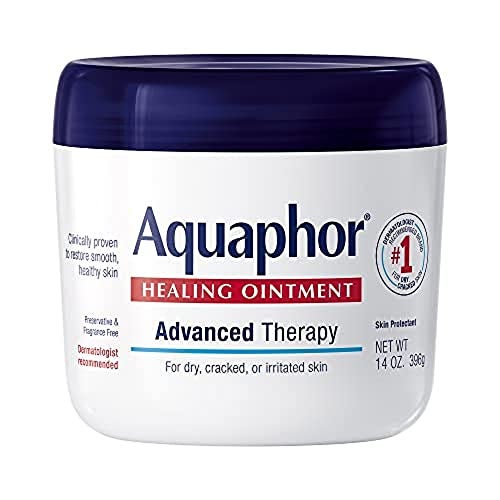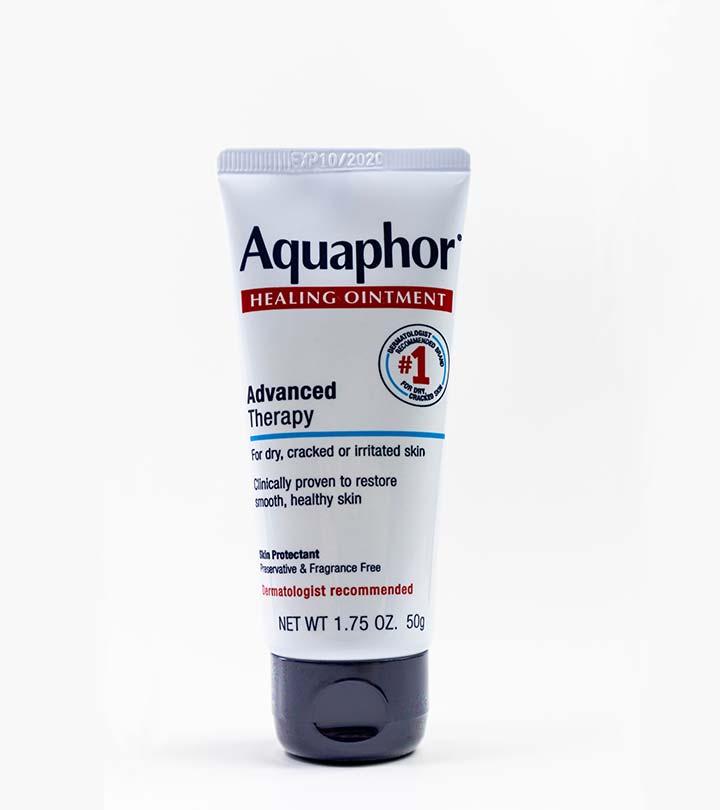Is there a single product that can soothe a sunburn, heal a scraped knee, and rescue your chapped lips? The answer, surprisingly, might be Aquaphor Healing Ointment, a versatile remedy that dermatologists and skincare enthusiasts alike swear by.
Aquaphor, a name now synonymous with skin healing, has carved a niche for itself in medicine cabinets and beauty routines worldwide. It's a simple, yet powerful, formula, designed to offer a protective barrier and promote the natural healing process. Its efficacy spans a wide spectrum of skin conditions, from the mundane to the more serious, making it an indispensable product for a multitude of uses. Understanding the nuances of Aquaphor's application is the key to unlocking its full potential.
Before we delve further, let's establish a clear definition. Aquaphor Healing Ointment (for the skin) is primarily designed to protect and heal. It's a petroleum-based ointment that acts as a barrier to prevent moisture loss, allowing the skin to repair itself. Its emollient properties soften and moisturize the skin, providing immediate relief to dryness and irritation. It is a staple in many households, trusted for its effectiveness and gentle formulation.
The versatility of Aquaphor is perhaps its most compelling feature. It's not just a one-trick pony; its uses extend far beyond simple moisturization. Heres where things get interesting.
As a general rule, Aquaphor is used for a variety of skin ailments, the most common being those involving minor cuts, scrapes, and burns. Its occlusive properties create a protective layer over the affected area, keeping it clean and preventing further irritation. This barrier also locks in moisture, creating an optimal environment for the skin to heal itself, promoting faster and more effective recovery. Its a go-to for families, and its gentle formulation means it can be used on almost everyone.
Beyond cuts and scrapes, Aquaphor proves particularly useful for those suffering from eczema. Eczema, or atopic dermatitis, is a chronic skin condition characterized by dry, itchy, and inflamed skin. Aquaphor's ability to moisturize and protect the skins surface is critical in managing eczema symptoms. By locking in moisture and acting as a barrier against irritants, Aquaphor can help alleviate the itchiness and discomfort associated with eczema. A thick layer of Aquaphor can also be a vital component of an eczema treatment regimen.
Furthermore, the product is a familiar face in the treatment of minor burns. The cooling effect of the ointment provides immediate relief, and its protective properties prevent infection and promote healing. From the kitchen mishap to sun-induced burns, Aquaphor offers comfort and aids in the skin's natural repair processes.
Another common application is the treatment and prevention of chapped lips and cracked skin. The delicate skin of the lips is particularly vulnerable to environmental factors like wind and cold weather. Aquaphor serves as an effective barrier against these elements, preventing moisture loss and keeping lips soft and supple. Simply applying a layer of Aquaphor before exposure to harsh conditions can offer significant protection. Similar to this, Aquaphor is a boon for cracked skin on hands, feet, or any other areas prone to dryness.
But how does this simple ointment achieve such broad efficacy? The key lies in its simple formulation. Aquaphor consists of petrolatum (the primary active ingredient), mineral oil, lanolin alcohol, panthenol, and glycerin. Petrolatum forms a protective barrier on the skin, preventing moisture loss. Mineral oil softens and moisturizes the skin, while lanolin alcohol, derived from wool, acts as an emollient. Panthenol is a provitamin of B5, which helps improve skin hydration, and glycerin further moisturizes by drawing moisture from the air. This combination of ingredients works synergistically to hydrate, protect, and soothe the skin.
While Aquaphors traditional uses are well-documented, its application extends to several other surprising areas. Dermatologists have revealed that it can be incorporated into skincare routines for a variety of purposes.
One of the most talked-about uses is as a component in a skincare mask. Some individuals apply a thick layer of Aquaphor over their nighttime skincare routine, a process known as "slugging." This occlusive layer seals in moisture, allowing the skincare products applied underneath to penetrate more effectively. The result is often a hydrated, glowing complexion. This technique, popular on social media, has many converts.
Aquaphor can also act as a makeup remover, particularly for stubborn products. While it may seem counterintuitive, Aquaphor's emollient properties are effective at breaking down makeup, allowing it to be wiped away gently. This method is particularly useful for removing waterproof mascara and other long-wearing makeup, minimizing the need for harsh cleansers.
Furthermore, some individuals use Aquaphor as a perfume enhancer. Applying a small amount of Aquaphor to pulse points before spraying perfume can help the fragrance last longer. The ointment acts as an adhesive, creating a surface for the scent molecules to cling to, extending the wear of the fragrance.
Another creative application of Aquaphor is as a hair styler. A small amount of Aquaphor can be used to tame flyaways and add shine to hair. The key is to use it sparingly, as too much can make hair appear greasy. This is a great hack for those looking for a quick fix.
Its important to debunk a common myth: does Aquaphor cause acne? The answer is generally no. Aquaphor is non-comedogenic, meaning it is unlikely to clog pores. However, everyone's skin is different, and individuals with particularly acne-prone skin should introduce Aquaphor cautiously and monitor their skins reaction. If any adverse reactions are noticed, it is best to discontinue use and consult a dermatologist. It is always best to be sure and test on a small area of skin.
Speaking of which, the question of how to use Aquaphor on the face is one of the most often asked. Dermatologists recommend applying a thin layer of Aquaphor to the face after your regular skincare routine, especially at night. This creates a protective barrier, retaining moisture and promoting healing. This technique is particularly effective for individuals with dry or sensitive skin. You should remember, that is important that you let it all absorb into the skin and not use too much.
Aquaphor's versatility and efficacy have secured its place as a skincare staple. It is a must have in households around the world. It's an effective treatment for a wide range of skin conditions. Whether you're looking to heal a minor cut, soothe dry skin, or enhance your skincare routine, Aquaphor offers a simple, reliable solution. Its broad array of uses, combined with its gentle formulation, makes it a worthy addition to anyone's personal care arsenal.
Remember, though Aquaphor is generally safe, and highly effective, consult a healthcare professional if you have serious skin conditions or concerns. Moreover, always conduct a patch test before using Aquaphor on a large area of your skin, especially if you have sensitive skin or are prone to allergies.


